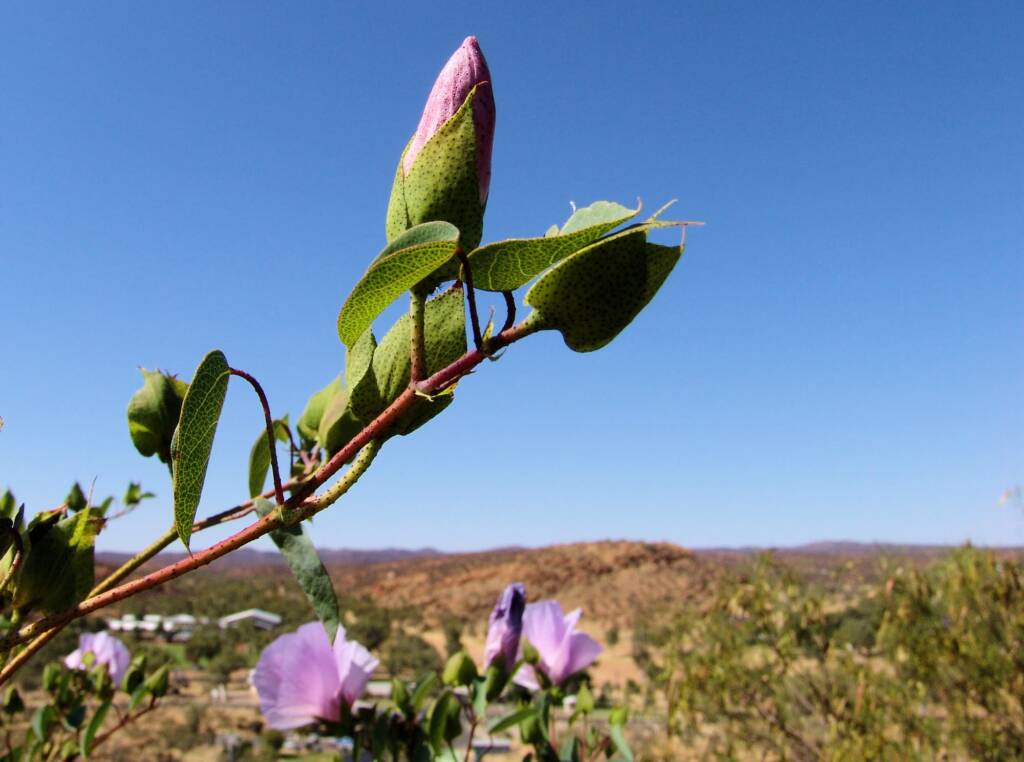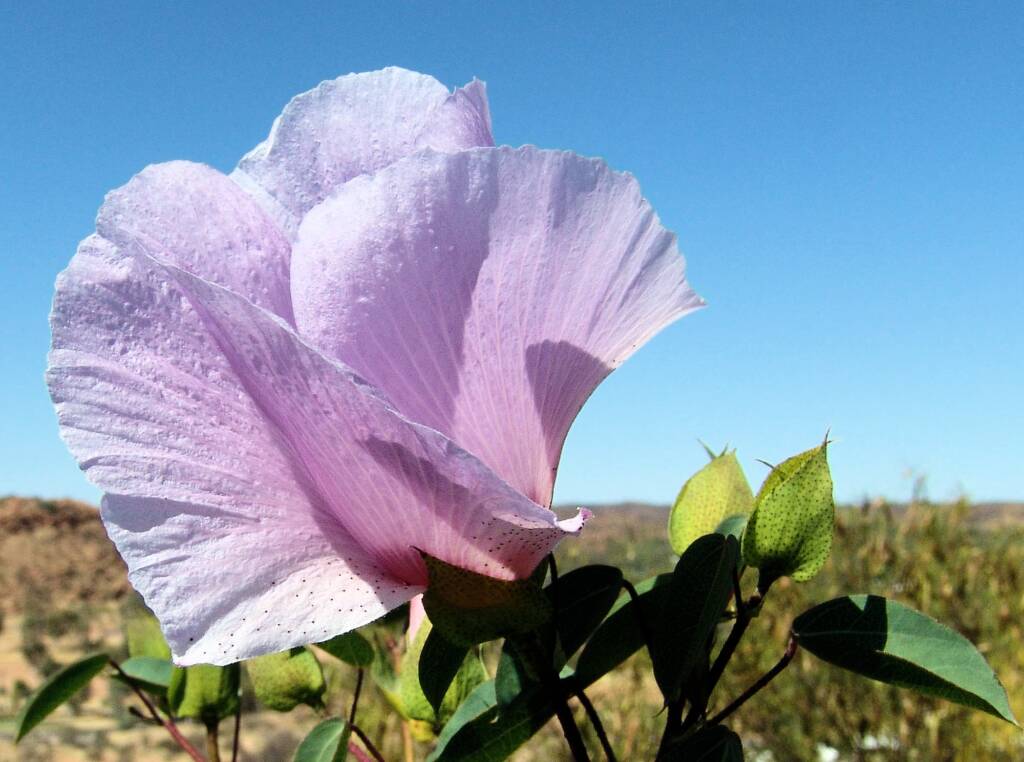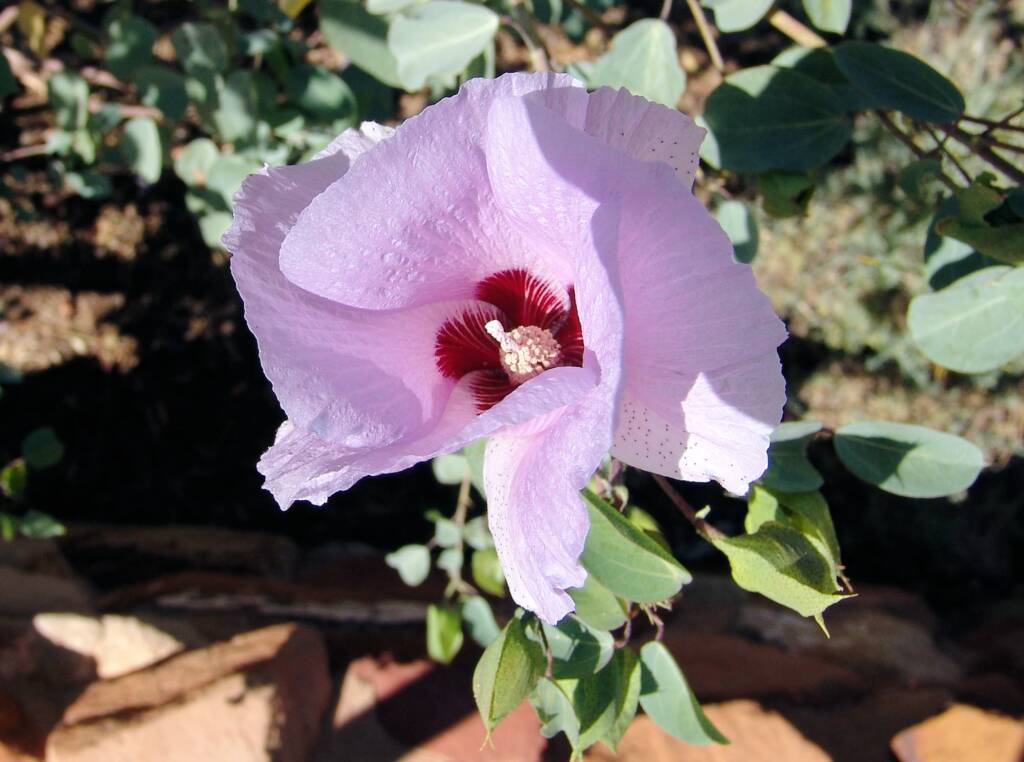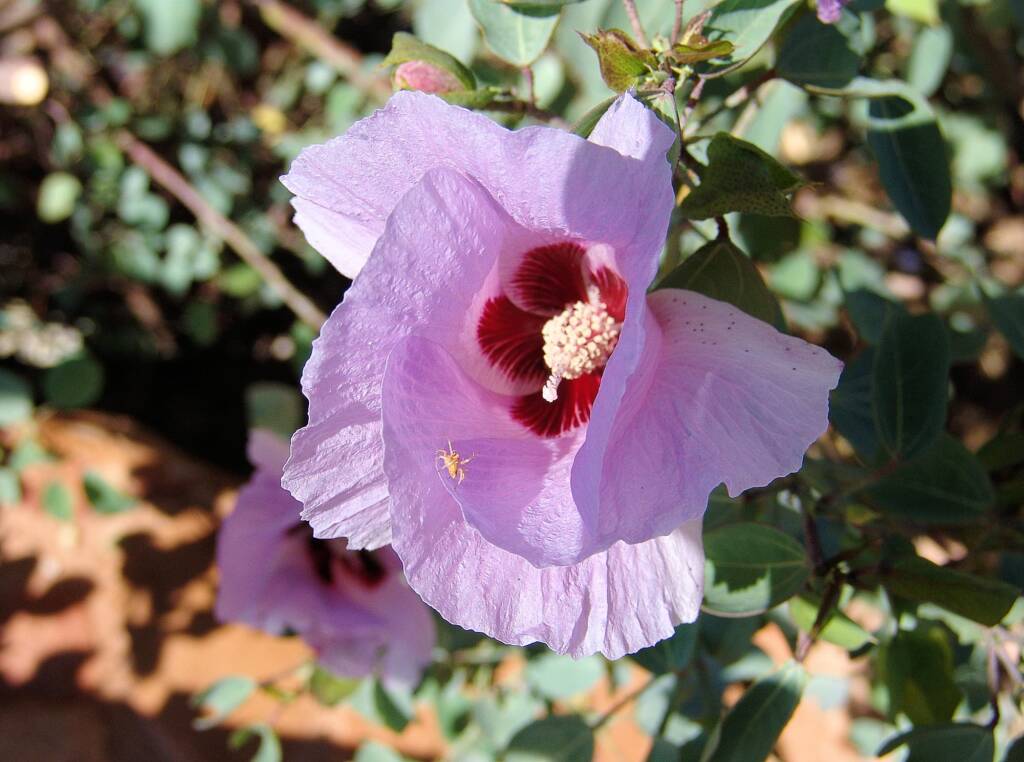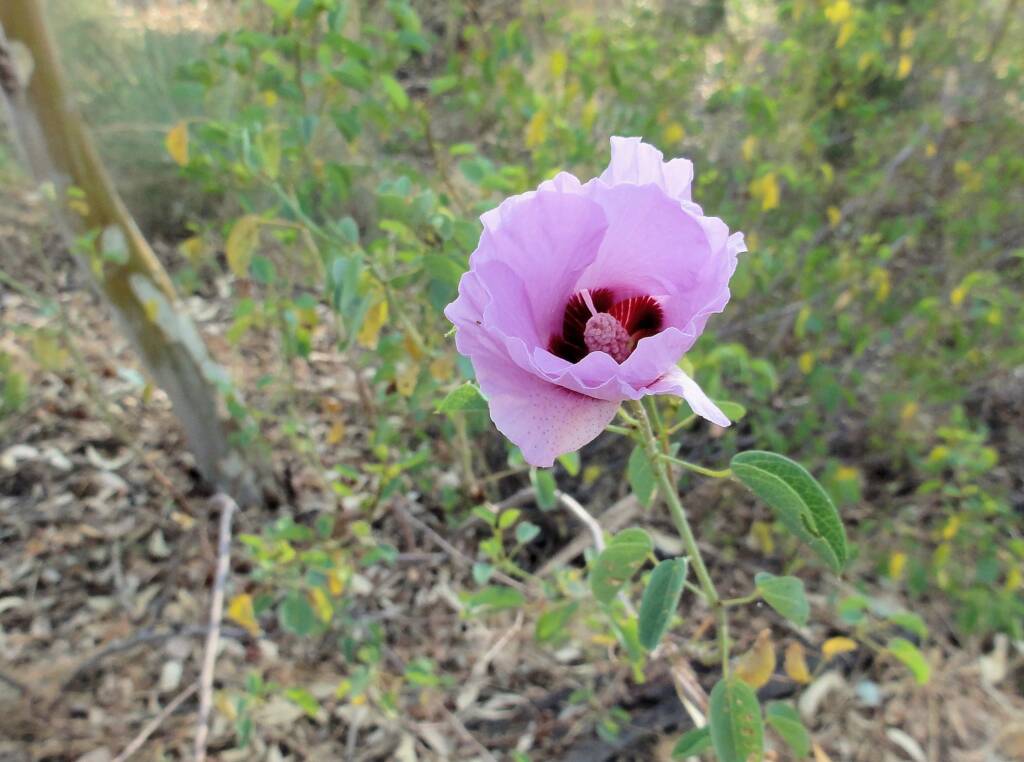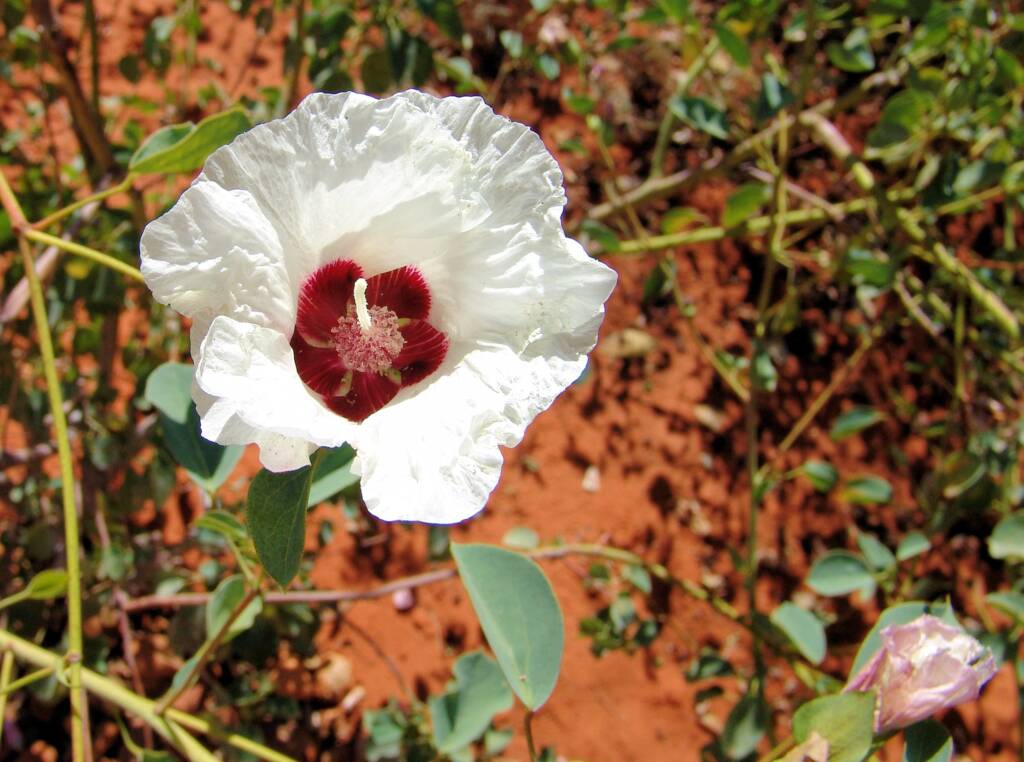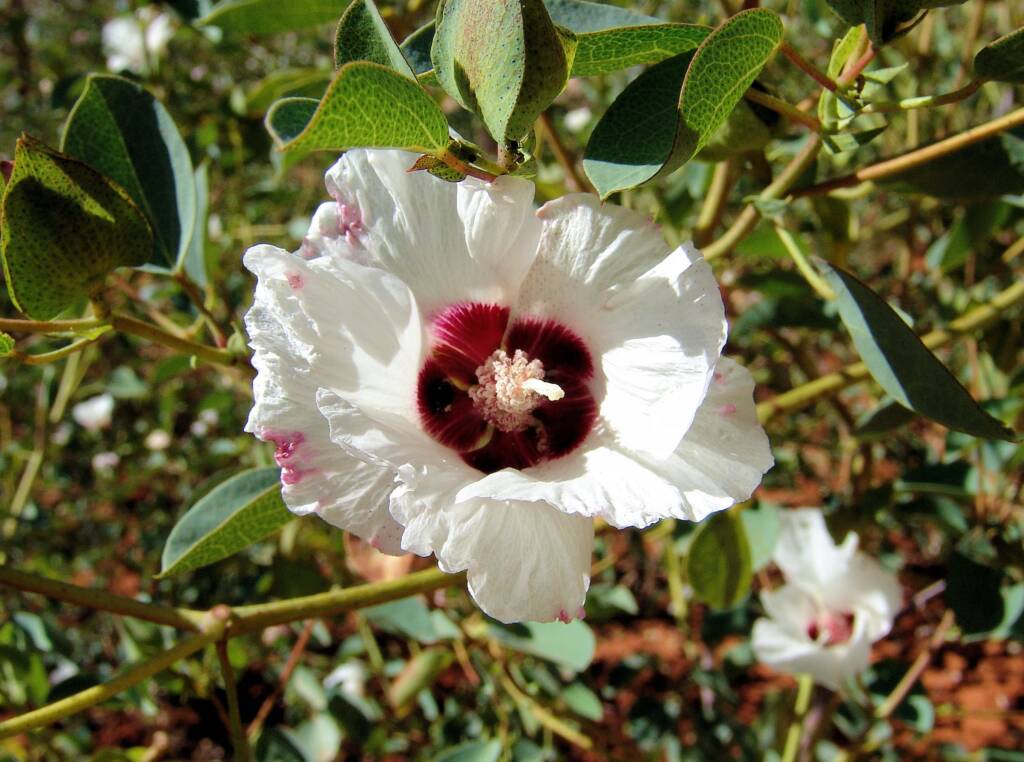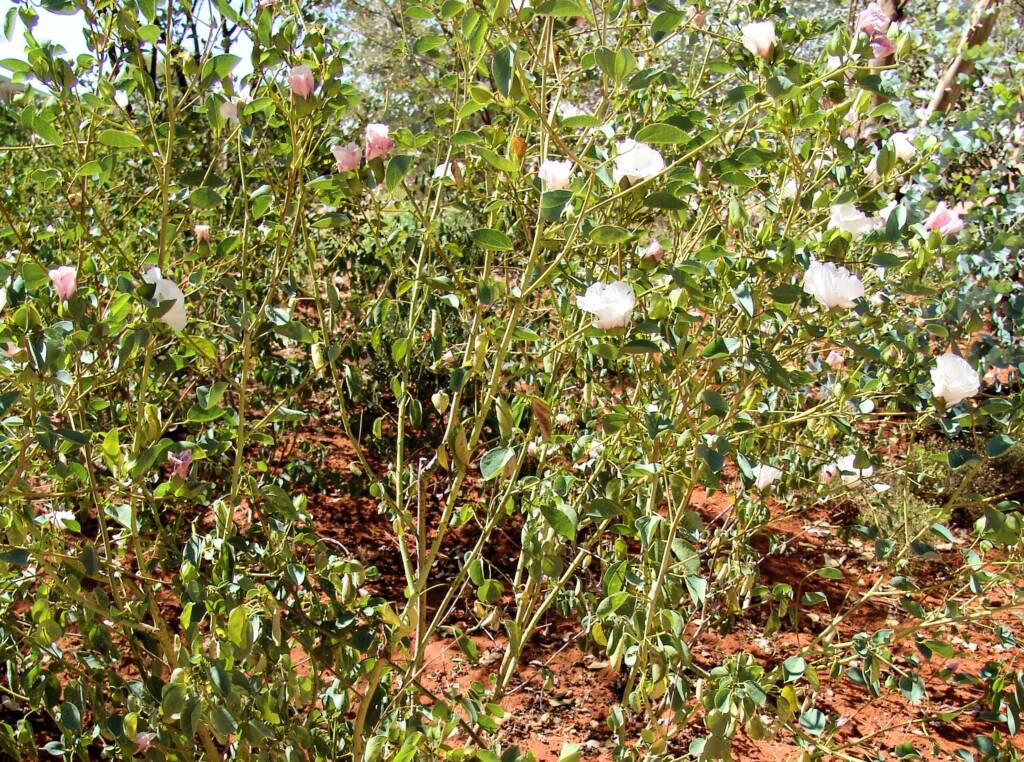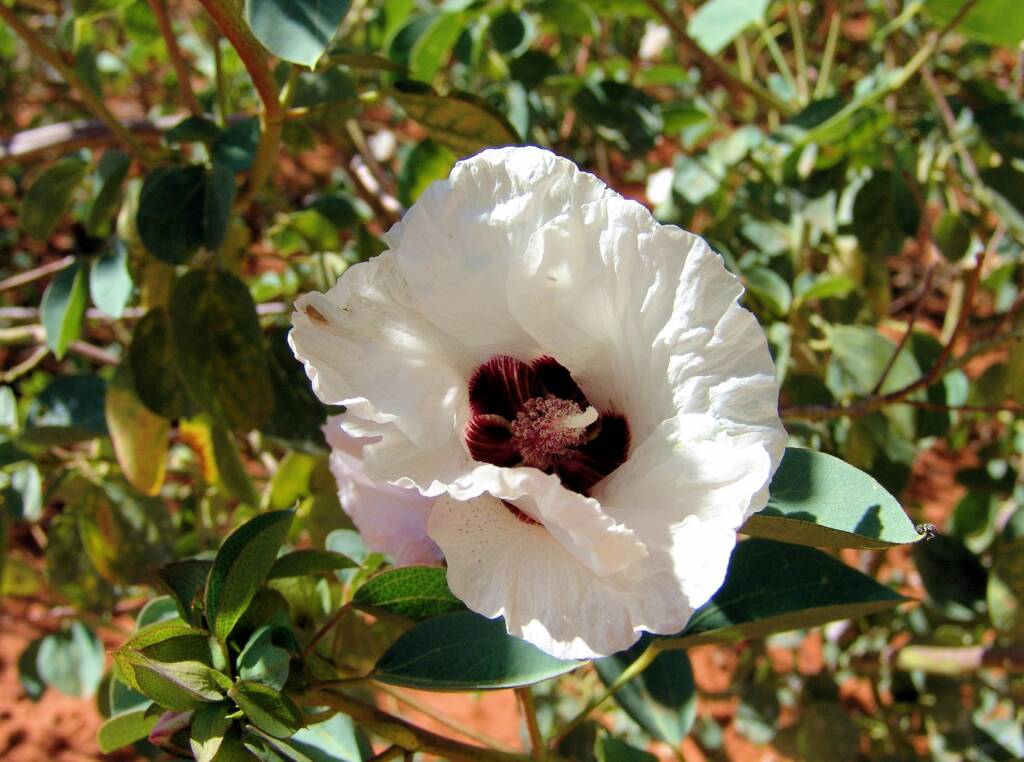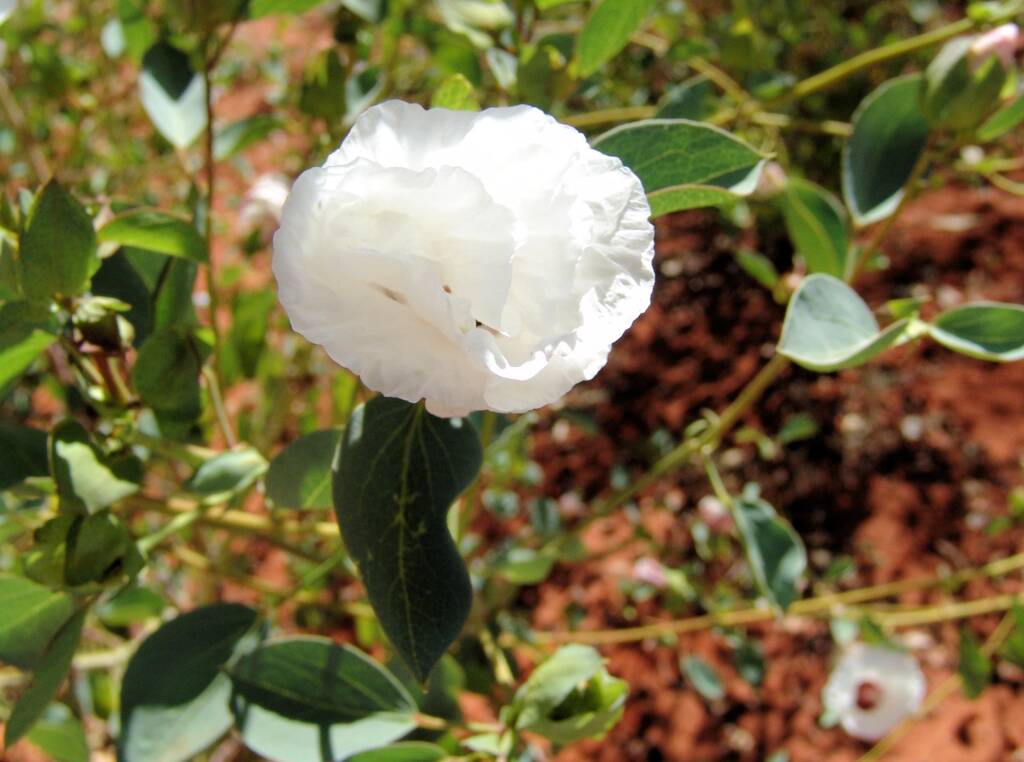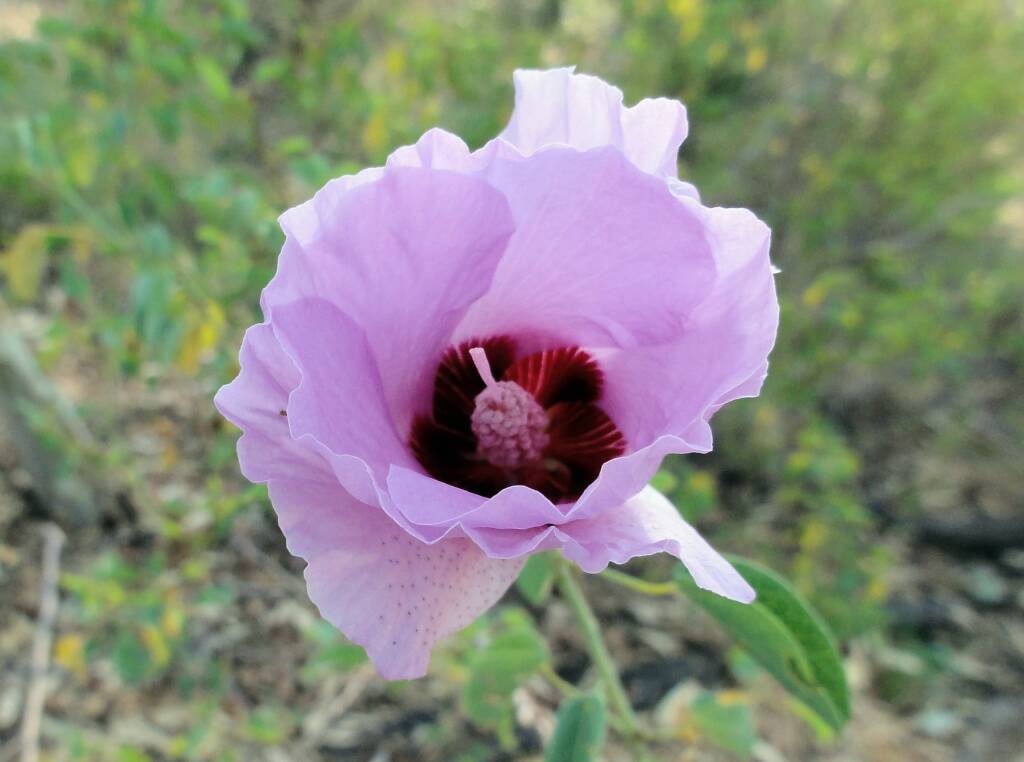Floral Emblem of the Northern Territory
Named in honour of Charles Sturt, who collected it during his journey to Central Australia in 1844-45, the Sturt’s Desert Rose has a number of common names including the Darling River Rose, Cotton Rosebush and Australian Cotton. Some of the names reflect that the plant is actually a member of the cotton family and not a rose.
The Sturt’s Desert Rose belongs to the Family Malvaceae, Genus Gossypium, which includes commercial cotton. However the hairs that cover the seeds are much shorter than the lint on commercial cotton varieties.
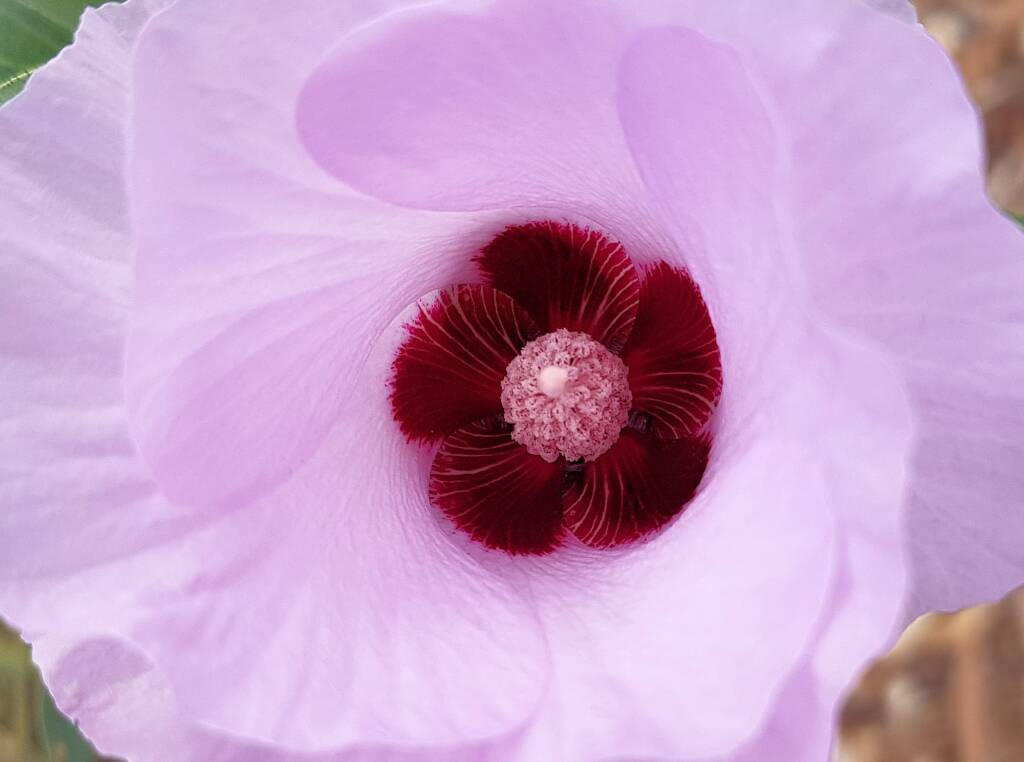
The Sturt’s Desert Rose was proclaimed the floral emblem of the Northern Territory on the 12th July, 1961 by the then Commonwealth Government responsible for the administration of the Territory.
Originally called Cienfugosia gossypioides, the Sturt’s Desert Rose is now known as Gossypium sturtianum var. sturtianum. It is also found on the Northern Territory flag in stylised form, although there are two additional petals added to the flag, together with the seven pointed black star in the centre of the flower, representing the six Australian States and the Northern Territory.
Description: The Sturt’s Desert Rose can be a bushy woody shrub, although in poor soil it can be open and straggly. It can grow up to 2 metres in height.
Leaves: The leaves are oval shaped and can vary in shades of green.
Flowers: The flower is borne on a short stalk. The flowers have 5 petals, are mauve in colour, although a pale white variation does occur. There are dark red markings at the centre of the flower. The epicalyx has 3 segments, the style is undivided with a bulge at the end. The style is surrounded by the stamens, except for the part extending above the stamens. The style bulge opens to 5 stigmas.
Habitat: The Sturt’s Desert Rose is an arid zone plant, found growing on stony or rocky ground or in dry creek beds. It can be found in Central Australia, extending into the outback region of South Australia, New South Wales and Queensland.
The flowers of the Sturt’s Desert Rose are also popular with a range of insects and spiders looking for pollen, nectar or prey.

Olive Pink Botanic Garden, NT
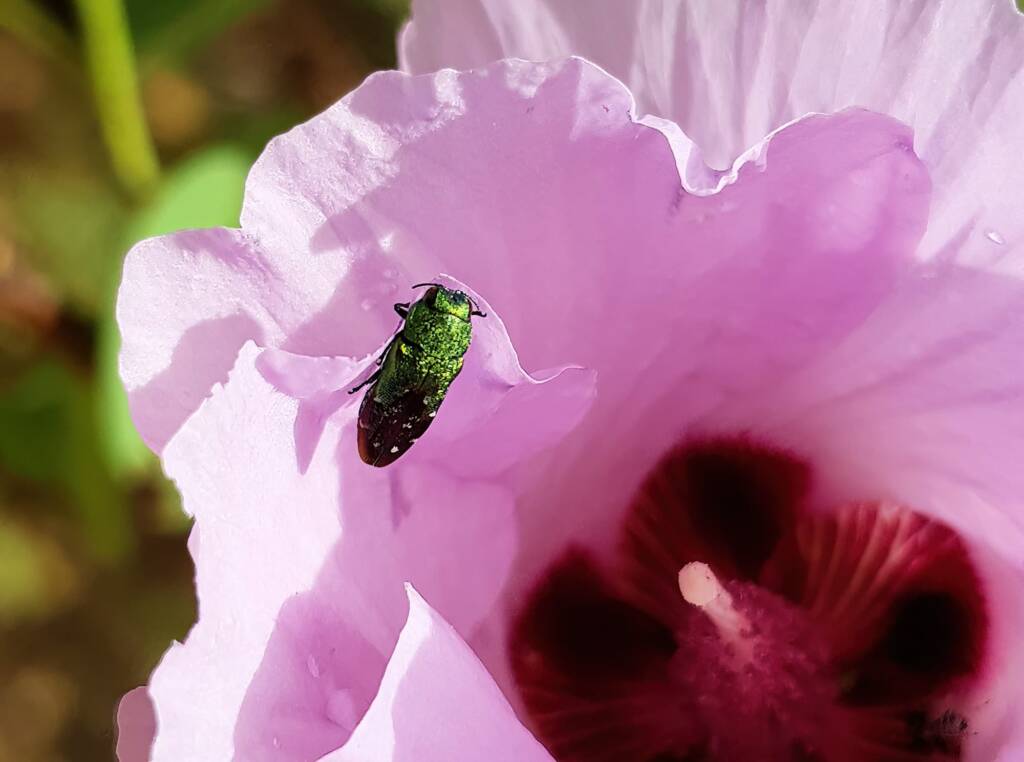
Visitors to Alice Spring will find them a common planting in the gardens, and can be seen on Anzac Hill, Olive Pink Botanic Garden and the Alice Springs Desert Park.
Check out our other information on the Sturt’s Desert Rose:
- Sturt’s Desert Rose (Gossypium sturtianum) — Alice Springs Flora
- Snapshots: Alice Springs Desert Park — Alice Springs Desert Park
- Sturt’s Desert Rose (Gossypium sturtianum) — Olive Pink Botanic Garden Flora
- Scientific classification
- Kingdom: Plantae
- Phylum: Charophyta
- Class: Equisetopsida
- Subclass: Magnoliidae
- Superorder: Rosanae
- Order: Malvales
- Family: Malvaceae
- Genus: Gossypium
- Species: Gossypium sturtianum
- Variety:
- Gossypium sturtianum var. nandewarense (Derera) Fryxell
- Gossyipium sturtianum var. sturtianum J.H.Willis
More information on the Sturt’s Desert Rose can be found at the Australian National Herbarium / Australian National Botanic Gardens.
FloraFlora in Australia Flora Index Acacia Anigozanthos (Kangaroo Paws) Annual Yellowtop Apium prostratum subsp. prostratum var filiforme Apple Bush (Pterocaulon sphacelatum) Australian Bluebell Australian Gossypium Banksia Batswing Coral Tree Billy Buttons Birdsville Indigo Blue Pincushion Bush Banana Callistemon Callitris drummondii (Drummond’s Cypress Pine) Calothamnus quadrifidus Cape Honeysuckle Cassia fistula (Golden Shower) Cattle Bush Common Heath Crotalaria Darwinia wittwerorum (Wittwer’s Mountain Bell) Daviesia oppositifolia (Rattle-pea) Desert Oaks Drumsticks Eremophila Eucalyptus Ficus Flannel Cudweed (Actinobole uliginosum) Georges Indigo Goatshead Burr (Sclerolaena bicornis) Golden Everlasting Goodenia Gossypium Grass and Grasses Grass Trees Grevillea Grey Germander Hakea Kapok Bush (Aerva javanica) Lambertia sp Leptospermum MacDonnell Ranges Cycad Maireana scleroptera Mexican Poppy Minnie Daisy Mistletoe Family Nardoo Native Apricot Nicotiana megalosiphon subspecies sessilifolia Nuytsia floribunda Orange Spade Flower Orchidaceae Parakeelyas (Calandrinia) Pebble Bush (Stylobasium spathulatum) Perennial Yellow Top Pink Everlasting Pink Rock Wort Poached Egg Daisy Portulaca Proteaceae Ptilotus Quandong Resurrection Fern Rosy Dock Ruby Saltbush Santalum Solanum Spike Centaury Spinifex Storkbill (Erodum cygnorum) Striped Mint Bush Sturt’s Desert Pea Sturt’s Desert Rose Tall Saltbush Tangled Leschenaultia Tar Vine Tribulus eichlerianus Upside-down Plant Urodon dasyphylla Variable Daisy Waratah (Telopea) Wertabona Daisy White Cedar (Melia azedarach) White Indigo White Paper Daisy Wild Passionfruit Wild Stock Woolly-Headed Burr Daisy Woolly Bush Yellow-keeled Swainsona
Flora & FaunaFauna Flora Fauna Flora Funga Glossary Funga Related Topics Scientific Classification Backyard Wildlife Floral Emblems of Australia Wildflowers

